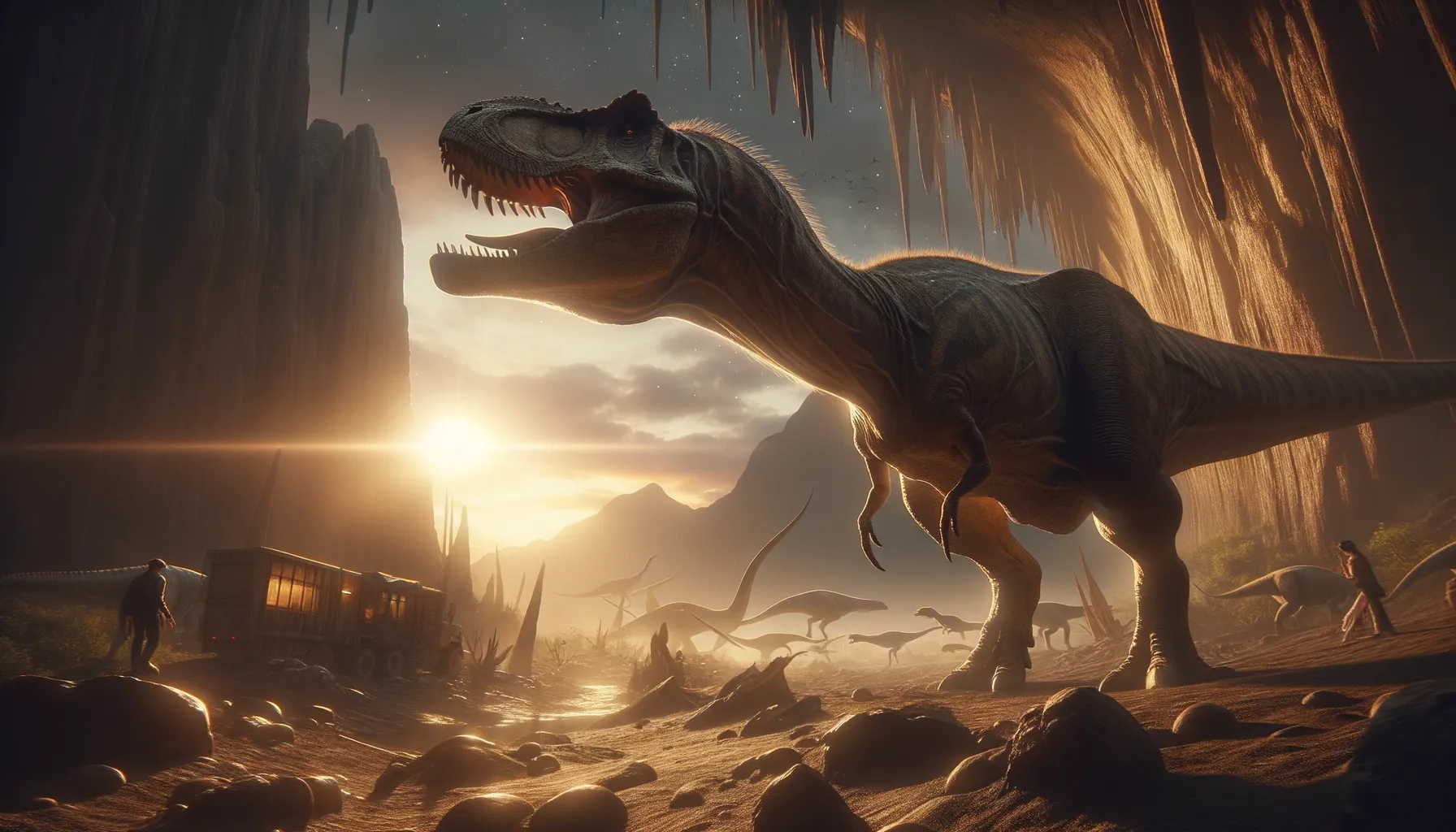
Qianzhousaurus
A snouted predator from ancient times.
Period
triassic
Length
Around 30 feet long.
Height
Around 6 feet tall at the hip.
Weight
About 750 to 900 pounds.
Qianzhousaurus is a fascinating tyrannosaurid dinosaur known for its long, narrow snout, earning it the nickname 'Pinocchio rex.' It was discovered in southern China and lived during the Late Cretaceous period. Its unique physical characteristics set it apart from other large predatory dinosaurs of the time, suggesting a diverse ecological niche. This dinosaur adds important insights into the diversity of the tyrannosaurid family and their adaptations to different environments.
Diet
Qianzhousaurus was carnivorous, feeding on smaller dinosaurs and possibly scavenging. Its diet likely included birds and small reptiles, taking advantage of its speed to capture prey.
Hunting
With its elongated snout and narrow teeth, it was well-adapted to snatching up fast-moving prey. It likely relied on ambush tactics and quick bursts of speed to capture meals in its forested environment.
Environmental challenges
During its time, Qianzhousaurus faced competition from other large and small predators, potentially influencing its hunting strategies. Its environment was subject to climate fluctuations and changes in vegetation, which impacted prey availability. Competition for territory and resources would have shaped its interactions with contemporaneous species, requiring constant adaptation.
Speed
Moderate, likely up to 25 mph.
Lifespan
Estimated around 20 years.
First discovery
First discovered in China in 2014.
Fun Facts
- Qianzhousaurus is often nicknamed "Pinocchio Rex" because of its long, narrow snout.
- It lived during the Late Cretaceous period, about 70 million years ago.
- Qianzhousaurus was a member of the Tyrannosaur family, but it looked quite different from its famous relative, T. rex.
- This dinosaur was discovered in southern China, and its name comes from Qianzhou, an ancient name for the city of Ganzhou where it was found.
- Qianzhousaurus was likely a fast and agile predator due to its lightweight skull and slender build.
- It is thought to have preyed on small animals like lizards and mammals in its environment.
- Qianzhousaurus was about 29 feet long, making it sizable but not as massive as some of its other tyrannosaur cousins.
Growth and Development
Young Qianzhousaurus would have experienced rapid growth during the first few years to reach maturity quickly. As they grew, their hunting skills and social behaviors would have been honed through practice and interaction. Skeletal remains suggest they reached full size by late adolescence.
Habitat
Qianzhousaurus lived in a humid, forested area typical of southern China during the Late Cretaceous. The dense vegetation offered both hunting opportunities and cover from larger predators. Its habitat was rich in biodiversity, supporting a variety of plants and animals, which sustained a complex food web.
Interaction with other species
Qianzhousaurus likely shared its habitat with other predatory dinosaurs and herbivorous species. It may have competed for food with similar-sized predators and had to defend carcasses from scavengers. Interactions could include territorial disputes, with fossil evidence detailing scars and healed injuries.
Natural lifespan
In the wild, it naturally lived up to two decades.
Reproduction
Qianzhousaurus likely reproduced in a manner similar to other theropods, laying eggs in nests. Parental care might have been provided, ensuring young had a better chance of survival. They may have had unique courtship displays to attract mates, enhancing reproductive success.
Social behaviour
Though primarily solitary hunters, Qianzhousaurus might have engaged in complex social interactions during mating seasons. This could involve displays of dominance and territorial behavior, ensuring only the fittest individuals mated. Evidence suggests sporadic interactions outside of these contexts.
Fossil locations
Fossils of Qianzhousaurus have primarily been found in southern China, adding to the diversity of known species from this region. Its discovery in 2014 provided significant insight into the variation within tyrannosaurids, highlighting east Asia as a key area for future paleontological discoveries.
